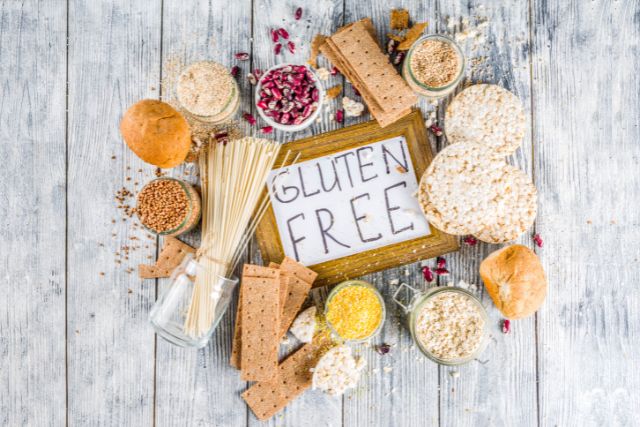
Gluten-Free Cooking for Celiac Disease: Maintaining Health Through Diet
An autoimmune condition called celiac disease affects around 1% of people globally. Gluten is a protein included in wheat, barley, and rye that may cause harm to the small intestine when consumed by people with this illness. This reaction may result in nutrient malabsorption, which may cause a variety of symptoms, from severe nutritional deficits to pain in the digestive tract. A strict, gluten-free diet for the rest of one's life is the only proven cure for celiac disease.
Recognizing the Effects of Gluten
Dough is made more elastic, rises more quickly, and keeps its form thanks to a protein compound called gluten. Gluten is safe for the majority of individuals and a staple in many diets. But even a little bit of gluten may have a major negative impact on those who have celiac disease. The small intestine's villi, which resemble microscopic hairs and are involved in nutrition absorption, are harmed by the immunological reaction that gluten causes. Serious health problems including osteoporosis, infertility, neurological disorders, and an increased risk of several malignancies might result from this over time.
Making the Switch to a Gluten-Free Diet
Making the switch to a gluten-free diet might be intimidating for those who have just received a celiac disease diagnosis. However, it is completely controllable with the correct knowledge and tools. To make the transfer easier, take these crucial steps:
Learn for Yourself
The first step is to know which foods are naturally gluten-free and which contain gluten. You may safely eat a variety of naturally gluten-free grains, including rice, maize, quinoa, and millet. Furthermore, the majority of fruits, vegetables, meats, and dairy products are safe options since they are gluten-free.
Carefully read the labels.
Under many other names, including malt flavouring, hydrolyzed vegetable protein, and modified food starch, gluten may be found in a wide variety of processed foods, sauces, and spices. Always carefully check food labels, and keep an eye out for any unidentified gluten sources.
Awareness of Cross-Contamination
When gluten-free items come into contact with gluten-containing meals, surfaces, or utensils, it may lead to cross-contamination. Use different toasters, cutting boards, and cooking tools for gluten-free cookery to prevent this. Make sure that communal cooking areas are properly cleaned to avoid any unintentional cross-contamination.
Organize Your Meals:
To guarantee a healthy, gluten-free diet, meal preparation is essential. Prioritise whole foods that are inherently gluten-free, and consider experimenting with grains like quinoa, buckwheat, and amaranth that are gluten-free. Almond flour, coconut flour, and chickpea flour are just a few of the many gluten-free flour options available to substitute regular wheat flour in baking and cooking.
Look for Gluten-Free Alternatives:
With the correct changes, many classic dishes may be made gluten-free. You may use gluten-free bread, pasta, and baking ingredients, for instance. Nowadays, a large variety of gluten-free items are available in many grocery shops, which makes it simpler to locate safe substitutes.
Seek Assistance:
Getting involved in a celiac disease support group may provide helpful advice, emotional support, and important information. These communities often post recipes devoid of gluten, suggest safe items, and provide guidance on travelling and eating out while having celiac disease.
A Look at Nutrition for a Gluten-Free Diet
If a gluten-free diet is not closely monitored, it might sometimes result in nutritional deficits. Iron, calcium, fibre, and B vitamins are often deficient in celiac disease patients. Take into account the following to make sure you are receiving all the nutrients you need:
Iron:
Include foods high in iron in your diet, such as fish, beans, lean meats, and fortified gluten-free cereals.
Vitamin D and calcium:
The main source of calcium is dairy products, but if you have a lactose intolerance (which is frequent in celiac disease patients), you may want to look into lactose-free dairy products or fortified plant-based milks like soy or almond milk. Supplementing with vitamin D may also be required, particularly in areas with little sunshine.
Fiber:
Since many high-fiber items, such as whole wheat bread and cereals, are off-limits, gluten-free diets may be low in fibre. Eat extra fruits, vegetables, legumes, and whole grains that are free of gluten, such as brown rice and quinoa, to increase your intake of fibre.
Vitamin B:
Wheat breads and cereals that have been fortified with these vitamins—particularly folate—are common. Seek for alternatives that are free of gluten and enhanced with these vital nutrients.
Travelling and Dining Out
Travelling or eating out might be difficult when you have celiac disease, but it is totally doable with enough planning:
Examine Dining Establishments:
Look for eateries that cater to unique dietary requirements or that have gluten-free menus before going out to eat. Nowadays, a lot of establishments clearly mark gluten-free menu items.
Talk Clearly:
Give the personnel a clear understanding of your demands when placing an order. Tell them you need to eat gluten-free meals since you have celiac disease. Never be afraid to enquire about the ingredients and preparation methods of foods to make sure they are safe for you.
Carry Snacks:
It's a good idea to bring gluten-free snacks on trips in case there aren't many accessible safe choices. Nuts, bars, and crackers devoid of gluten are often lightweight and convenient to transport.
It takes awareness and careful diet control to live with celiac disease, but it doesn't mean giving up tasty and diverse foods. Following a gluten-free diet is now easier than ever because to rising awareness of gluten sensitivity and the availability of more gluten-free items. You may have a nutritious, balanced diet that promotes your general well-being by being aware of your dietary requirements, organising your meals, and maintaining your knowledge base. Remember that education, planning, and a positive outlook on maintaining a gluten-free lifestyle are essential to living well with celiac disease.
Disclaimer: The information provided in this article is for general information purposes only. All information in this article is sourced from other websites, and we do not represent any rights regarding the contents and information on the site. All rights belong to their original owner.
